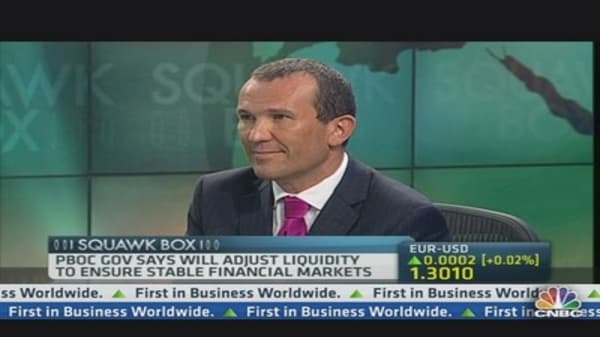Goldman Sachs says it has ended a recommendation to buy a basket of U.S. stocks with the highest sales exposure to Brazil, Russia, India and China (BRIC) and instead prefers U.S. firms with most exposure to the domestic market – just one more sign that sentiment towards emerging markets is fading fast.
The U.S. investment bank said its decision was based on revised expectations for slower growth in China, the world's second largest economy. Goldman last week cut its 2013 China growth forecast to 7.4 percent from 7.8 percent.
"The contrast between accelerating U.S. GDP [gross domestic product] growth and weakening and uncertain China growth represents a headwind to U.S. firms with high BRICs [Brazil, Russia, India, China] sales relative to domestic-facing firms," Goldman Sachs said in a note published on Monday.
(Read More: Goldman Downgrades Outlook for Asian Stocks)
It estimates that the median company in its basket of U.S. stocks with the highest BRIC exposure will grow sales by 3 percent this year, compared with 6 percent for a basket of U.S. stocks with most exposure to domestic sales.
Sentiment towards emerging markets has been hit hard in recent weeks by concerns about an unwinding in U.S. monetary stimulus and signs that China's economy is slowing faster than anticipated.





